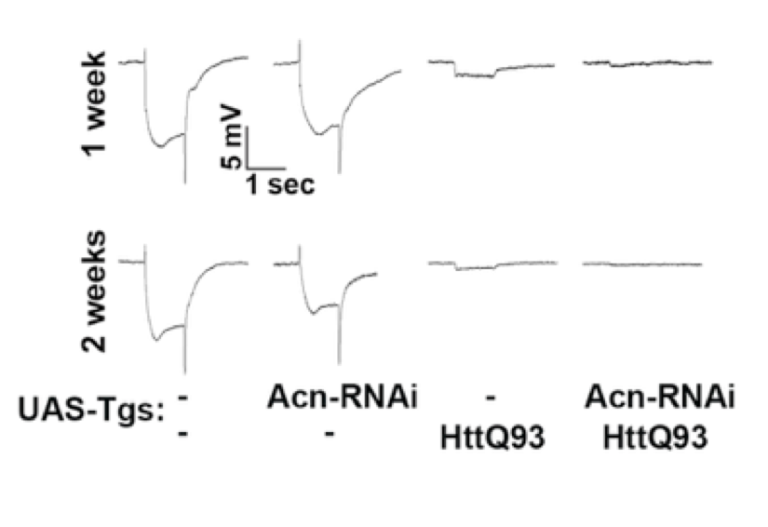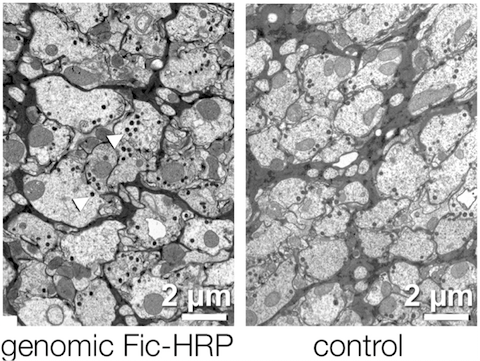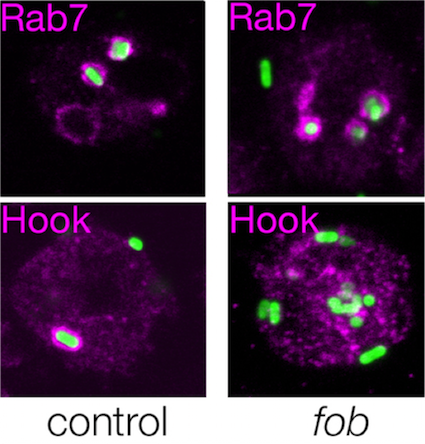Research Overview
The long-term goal of the Krämer Laboratory is to understand the molecular mechanisms that regulate responses to diverse cellular stresses. To discover the genetic basis of such stress responses we employ genetic and cell biological approaches.
We focus on three specific topics:
Autophagy and Neurodegeneration
The quality control function of autophagy is necessary to suppress neurodegeneration. We are employing genetic screens to identify genes participating in the regulatory mechanisms that adjust the levels of autophagy to maintain neuronal health.
AMPylation and Neurotransmitter Recycling
Fic domains regulate proteins by AMPylation. We found that this posttranslational modification is required for the normal recycling of histamine neurotransmitters in the fly visual system. Our biochemical and genetic approaches aim to define the critical AMPylation targets necessary for normal histamine recycling.
Lysosomal Fusion and Immune Signaling
Arthrogryposis-renal dysfunction-cholestasis (ARC) syndrome is caused by mutations in the human Vps33B and VIPAS39/Vps16B proteins. For homologs of both genes, Drosophila loss-of-functions models exhibit a compromised fusion of phagosomes with lysosomes. We are investigating the physiological consequences of this cell biological deficiency.
Autophagy and Neurodegeneration

Autophagy is a critical mechanism for the maintenance of neuronal function and the suppression of neurodegeneration. Our findings suggest a role for the Acinus protein in the regulation of this quality control function of autophagy. We aim to define the molecular mechanism of its regulatory function.
Electroretinograms show the requirement for Acinus expression to prevent age-dependent photoreceptor cell degeneration, which is further hastened by the expression of Huntingtin-polyQ proteins.
AMPylation and Neurotransmitter Recycling

AMPylation, the covalent addition of adenosine 5'-monophosphate (AMP) to hydroxyl groups, is a recently appreciated post-translational modification by which bacterial Fic domain proteins regulate small GTPases. To explore the function of eukaryotic Fic domains we generated fic null mutants. We discovered a role of AMPylation in the Drosophila visual system: Fic-mediated AMPylation in glia is necessary for normal recycling of the histamine neurotransmitter. How AMPylation of glial proteins contributes to neurotransmitter recycling is a focus of our investigations.
Drosophila Fic is an ER protein highly expressed in the glia of the visual system and enriched in capitate projections, cytosolic “fingers” that glia extends into the axonal endings of photoreceptors.
Lysosomal Fusion and Immune Signaling

ARC syndrome is caused by mutations in the human Vps33B and VIPAS39/Vps16B proteins. Mutations in their Drosophila homologs compromise the fusion of phagosomes with lysosomes and result in reduced clearance of bacterial infections and elevated immune signaling.
In Drosophila hemocytes, phagocytosed bacteria (green) are delivered to lysosomes and degraded, but in fob mutants, a model for ARC syndrome, the bacteria accumulate.